

Coming up with a project and completing it successfully is hard work. This hard work does not happen overnight, either. It takes tons of careful planning and strategic implementation from ideation to completion. But it all starts with a project proposal.
Writing an effective project proposal can place any project in the fast lane toward success. But figuring out how to write a project proposal can be daunting. But it doesn’t have to be.
In this article, we’ll show you six types of project proposals, five key tips for writing one, and how to write a project proposal for project success. But let’s get the definition out of the way first.
A project proposal is a document that describes a project, includes a timeline, budget, objectives, and goals, and answers every question that may arise concerning it.
The proposal outlines everything stakeholders need to know about the proposed project, including;
The project proposal gives the stakeholders a glimpse into what you intend to achieve through the project.
The goal of a project proposal can be to secure project funding, gain stakeholder buy-in, or build excitement and momentum for the project.
Here’s an example.
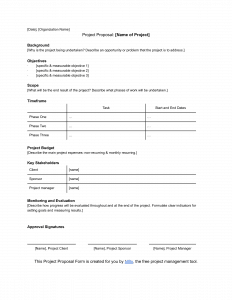
One of the best answers to “how to write a project proposal” is to write it clearly and confidently. That way, your confidence in the project will be transferred to the stakeholders.
If you’re not confident about your project, it will show in the proposal and compromise your desired outcome.
When creating a project proposal, you’ll come across six types of proposals. As a project manager, you need to understand each type.
A solicited project proposal is written or prepared in response to a Request for Proposal (RFP) or a Request for Application (RFA). Sponsors and stakeholders use these requests to get proposals from businesses and other institutions.
A Request for Proposal is used to announce a project in detail for qualified teams to prepare proposals and bid for project funding.
Therefore, do in-depth research and write persuasively to win the bid. Keep in mind that you are competing against other companies for project funding.
Unlike a solicited project proposal, an unsolicited proposal was not requested by the sponsors or stakeholders. It is defined as a proposal written to a government agency but not requested by the government.
It often proposes a public-private partnership submitted by a private company to enter an agreement with the government agency.
With unsolicited project proposals, you’re not under any competition with other companies. However, you must still be convincing enough to get the stakeholders you are pitching to interested in your project. It’s important to note that verifying the email of the stakeholders beforehand can also help ensure that your proposal reaches the right people and doesn’t end up in their spam folders.
This short document (only a few pages long) is formatted as a memo or a letter and gives general details concerning a project. It has fewer sections than a formal proposal.
These sections are the introduction, background, plan, project team structure, budget, and authorization.
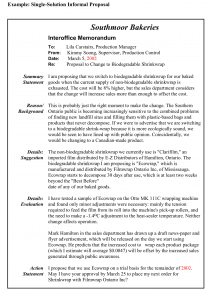
Your client can send you an informal request for a proposal. When this happens, you reply by preparing and sending them an informal project proposal. The rules are less strict when writing this kind of proposal.
Project managers need to learn how to write a renewal proposal. A renewal project proposal is written to the client after an ongoing project has contractually ended.
The proposal is prepared to request the client to renew the contract for a similar project. Here’s an example.
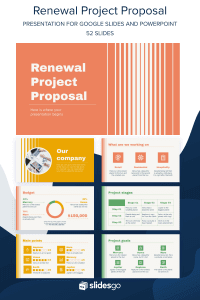
This proposal is written to clients or project sponsors with the hope that they will extend their engagement with your company.
For instance, let’s say you run a SaaS marketing agency. You can write a renewal proposal including why SaaS marketing is different from traditional strategiesto convince your clients to continue working with you.
Take time to emphasize your past results, milestones, and achievements that you’ve helped the client to achieve. This may persuade them that you’re the right fit for them to achieve even more success in the future.
There’s no need to persuade or convince the stakeholders when writing a continuation proposal. It is simply a reminder to them that the project is kicking off.
This proposal is key to getting stakeholders to release the project funds they already approved. Here’s an example.
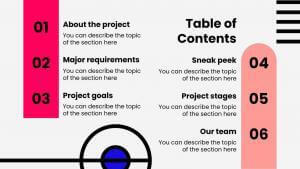
It can also act as a progress report and budget breakdown before they release additional funds for the project to continue.
However, keep in mind that continuation proposals can only be written for budget years that were already approved by the sponsors in the original award.
A supplemental project proposal is written to request increased support for a proposal already written, approved, and funded. The requested resource increase may result in the broadening of the project scope.
Additionally, a new budget must be written to include the supplementary resources included in this new arrangement.
Persuasion is vital when writing a supplementary proposal because you must convince the stakeholders of the importance of the additional resources you’ve requested.
A few important tips will guide you on how to write a project proposal effectively. Let’s look at the five top tips you should follow.
Your project proposal will have a positive impact on your stakeholders if you have a good understanding of who they are and what they’re looking for.
Get to know how familiar they are with the proposed project. This will guide you on how to communicate your idea to them.
It’ll also help you decide whether to provide supplemental information or materials to the stakeholders.
Remember to adjust the information and formalities you include in the proposal to suit each stakeholder and their preference. You may, therefore, need to write more than one version of the project proposal for each stakeholder.
It’s advisable to use language that is easy to understand when writing a project proposal. Try and avoid jargon to ensure you don’t lose your audience in the process of trying to make an impression.
Remember also to use simple sentences and an easy-to-follow format to enhance the readability of your proposal further. Consider using a good content generator to help you with this. These content writing tools can help you detect complex sentences and words that can be simplified for your audience.
Additionally, keep the proposals short. Even if you’re the best writer in your region, you can only sustain your readers’ attention for so long. So know your limit and ensure your project proposal is not any longer than it needs to be.
When talking about how to write a project proposal, persuasion is an invaluable asset to have. It helps you get the stakeholders to act favorably toward the project.
There are several persuasive tools that you can use to grab your sponsors’ attention. Use;
Don’t be shy to highlight your past achievements and qualifications too. This will help instill confidence and trust in your readers, leading them to take action on your project proposal.
Facts, graphs, figures, charts, and numbers are very important in helping you substantiate your project proposal. These also help prove that the project is a worthwhile investment for your sponsors.
So get your hands dirty and dig for all the information you can get about past projects. Look at both successful and unsuccessful projects alike. This data will serve as evidence and examples that you can follow to craft a convincing project proposal for your stakeholders and sponsors.
You know what they say; when in doubt, use a template.
Okay, I made that up. But you get the point.
Templates help your company establish a consistent way of creating proposals while preventing anyone from missing any critical details. Here’s an example.
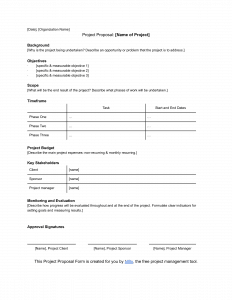
Templates also save time since anyone using them will know what details should be included and where each section should appear in the final draft.
Even though you need to customize each proposal for the intended audience and project in question, these six steps can act as guidelines to ensure you create a compelling project proposal.
Like an essay introduction or a report abstract, the executive summary briefly describes your project.
Here’s an example.
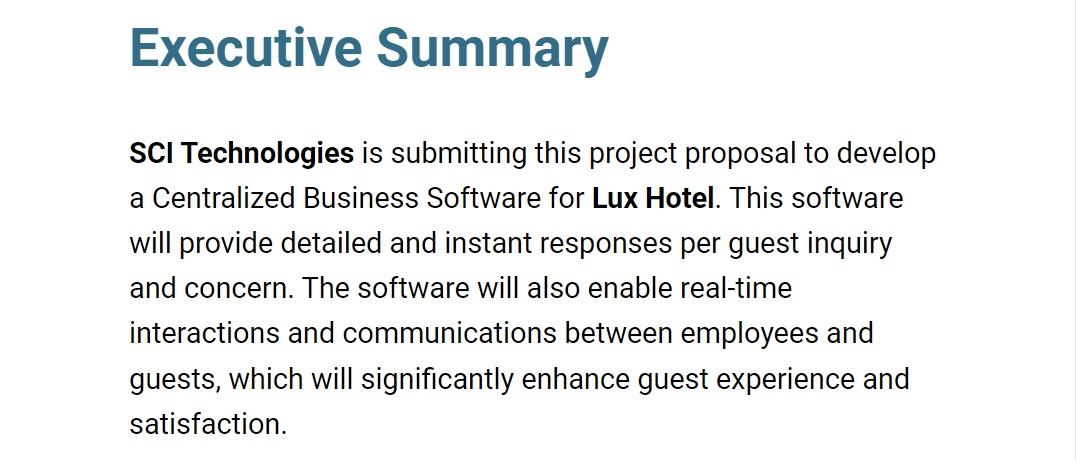
The executive summary is meant to give the reader an overview of the project and persuade them to keep reading until the end.
A great executive summary should include:
The summary should be just a few paragraphs long. Remember, it’s not meant to be a detailed description of the project. You’ll get the chance to discuss the project in-depth later on in the proposal.
When considering how to write a project proposal, a background check is an essential element to capture.
Here, make sure to write about the specific problem your project is looking to address and what is already known about it.
Include who has addressed the problem before, their research findings, and why this data is insufficient.
Here’s an example of a project background.
This is where you use your research data and statistics to bolster your project proposal. These numbers go a long way in convincing readers that your project and the problem you’re addressing are worthwhile undertakings.
In the end, let this section be about a page long (or less).
Since you’ve presented a problem in the project background section, it’s only logical that you present a solution in the next section.
Here’s an example.
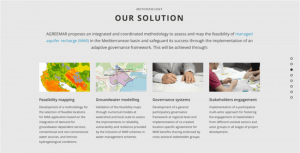
This section provides an opportunity to reveal your project approach in more detail.
In this section, include;
This might turn out to be the longest section of your proposal. That’s because you need to explain everything involved in achieving your proposed solution in detail.
It’s also worth noting that you may not need all the items stated above in your solution statement. So depending on your project scope, you can choose what to include and what to leave out.
Every stakeholder wants to know what the results of the project will be. Use this section to show them what their resources will ultimately achieve.
Here’s an example.
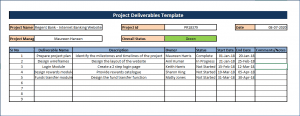
Project deliverables should include the final product or projected outcome, SMART goals that align with your deliverables, and a project timeline.
As important as the problem and solution statements are, stakeholders visualize the project more easily when the deliverables are clearly defined.
By this point, every project manager hopes they’ve convinced the stakeholders that the project is worthwhile and needs to be implemented immediately. So the next natural step is to list what resources you need to undertake the project.
For example, this software development project proposal presents a breakdown of the costs required for the project.
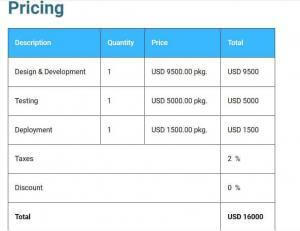
One of the key points on how to write a project proposal is to be clear about the resources you’ll need to deliver the desired products. So be sure to include:
It’s recommended that you save this section for the end of the project proposal to avoid bombarding and overwhelming your sponsors with requests too early.
Give your idea time to float and convince them of the project’s value before stating the costs.
The concluding section should give an overview of all the points discussed within the proposal. Make sure to write a persuasive and confident conclusion because this is your final chance to convince your reader to invest in the project.
Here’s a nice example.
You can restate the problem your project seeks to solve, the proposed solution, and the impact the solution will have in the end. Just like a traditional essay, keep it relevant to the proposal.
If you are pitching or proposing the project to someone via email, we recommend going for plain text formatted email rather than spending time and designing email templates from scratch.
Now that you know how to write a project proposal, let’s look into three templates you can use for your next proposal.
A business proposal is a written document aimed at helping a business gain clients and partners. This is done by describing the products and services offered, the potential outcomes of using the services, and the costs associated with them.
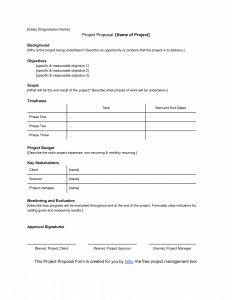
A business proposal template will help guide you into writing an effective proposal that is likely to win the approval of the intended sponsor.
A financial proposal is prepared to help organizations and businesses get funding from investors. It can also be used to suggest some changes in the budget and how much time is needed for the changes to be made.
Here’s a great example.
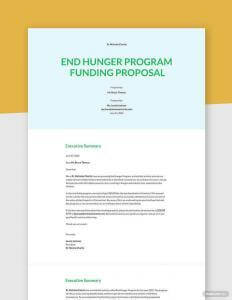
When using a financial proposal template, be sure to detail all the resources needed, why you need each resource, and how they will be used to achieve the desired outcome.
Since most of the financial proposals are to be sent in person, you can try experimenting with multiple formats like a Half-Fold template, trifold brochure template, or Gate-Fold, as these templates make reading the proposal a bit easy.
A nonprofit project proposal acts as a pitch letter that shows grantors the benefits of funding a nonprofit organization for a specified project. These grant proposals can be used to ask for funding from within the organization or from grantors outside the organization.
Here’s an example.
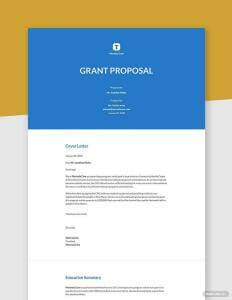
These kinds of proposals can be very detailed. Therefore, a nonprofit project proposal template (like the one shown above) can come in handy in ensuring you don’t miss any crucial details.
In this article, we have shown you how to write a project proposal effectively. You have learned about the six types of project proposals and the five essential tips to apply when writing a project proposal.
More importantly, you saw the six steps to writing a successful proposal. You can also use the three examples of project proposal templates for guidance.
You’re now equipped to write a winning proposal for all your subsequent projects. Remember to do lots of research into your chosen topic and add data and numbers to your proposal. This will further convince your sponsors and stakeholders to invest in the project. All the best!
Use Nifty to ease up the process. Sign up, it’s free forever!